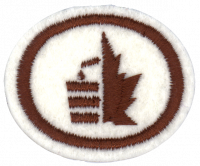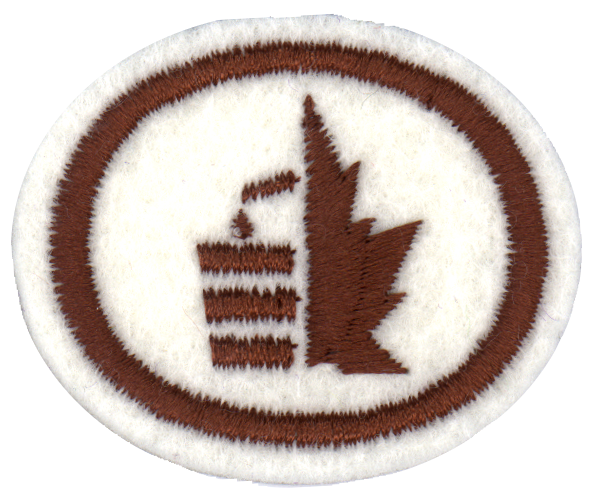Difference between revisions of "AY Honors/Maple Sugar/Answer Key/es"
From Pathfinder Wiki
< AY Honors | Maple SugarAY Honors/Maple Sugar/Answer Key/es
(Created page with "{{clear}}") |
|||
| (2 intermediate revisions by the same user not shown) | |||
| Line 75: | Line 75: | ||
{{CloseReq}} <!-- 8 --> | {{CloseReq}} <!-- 8 --> | ||
{{ansreq|page={{#titleparts:{{PAGENAME}}|2|1}}|num=9}} | {{ansreq|page={{#titleparts:{{PAGENAME}}|2|1}}|num=9}} | ||
| − | <noinclude> | + | <noinclude></noinclude> |
| − | </noinclude> | + | <!-- 9. ¿Cuál es el tiempo ideal para el flujo de savia? --> |
| − | <!-- 9. | ||
| − | |||
| − | |||
| − | + | <noinclude></noinclude> | |
| − | <noinclude | ||
| − | |||
{{CloseReq}} <!-- 9 --> | {{CloseReq}} <!-- 9 --> | ||
{{ansreq|page={{#titleparts:{{PAGENAME}}|2|1}}|num=10}} | {{ansreq|page={{#titleparts:{{PAGENAME}}|2|1}}|num=10}} | ||
| − | <noinclude> | + | <noinclude></noinclude> |
| − | </noinclude> | + | <!-- 10. ¿La corona de un árbol de arce (las ramas y el área foliar) afecta el flujo y dulzura de la savia? --> |
| − | <!-- 10. | ||
| − | |||
| − | |||
| − | + | <noinclude></noinclude> | |
| − | <noinclude | ||
| − | |||
{{CloseReq}} <!-- 10 --> | {{CloseReq}} <!-- 10 --> | ||
{{ansreq|page={{#titleparts:{{PAGENAME}}|2|1}}|num=11}} | {{ansreq|page={{#titleparts:{{PAGENAME}}|2|1}}|num=11}} | ||
| − | <noinclude> | + | <noinclude></noinclude> |
| − | </noinclude> | + | <!-- 11. En un promedio, ¿cuánto de la savia es necesaria para producir un galón de jarabe? --> |
| − | <!-- 11. | ||
| − | |||
| − | |||
| − | + | <noinclude></noinclude> | |
| − | <noinclude | ||
| − | |||
{{CloseReq}} <!-- 11 --> | {{CloseReq}} <!-- 11 --> | ||
{{ansreq|page={{#titleparts:{{PAGENAME}}|2|1}}|num=12}} | {{ansreq|page={{#titleparts:{{PAGENAME}}|2|1}}|num=12}} | ||
| − | <noinclude> | + | <noinclude></noinclude> |
| − | </noinclude> | + | <!-- 12. Probar el sabor puro de jarabe de arce o de azúcar de arce. --> |
| − | <!-- 12. | ||
| − | |||
| − | |||
| − | |||
| − | + | <noinclude></noinclude> | |
| − | <noinclude | ||
| − | |||
{{CloseReq}} <!-- 12 --> | {{CloseReq}} <!-- 12 --> | ||
{{ansreq|page={{#titleparts:{{PAGENAME}}|2|1}}|num=13}} | {{ansreq|page={{#titleparts:{{PAGENAME}}|2|1}}|num=13}} | ||
| − | <noinclude> | + | <noinclude></noinclude> |
| − | </noinclude> | + | <!-- 13. Observar y explicar cómo se utilizan los siguientes equipos para el azúcar de arce: --></noinclude> |
| − | <!-- 13. | ||
| − | |||
| − | |||
| − | |||
| − | |||
{{ansreq|page={{#titleparts:{{PAGENAME}}|2|1}}|num=13a}} | {{ansreq|page={{#titleparts:{{PAGENAME}}|2|1}}|num=13a}} | ||
| − | <noinclude> | + | <noinclude></noinclude> |
| − | </noinclude | ||
| − | |||
| − | |||
| − | + | <noinclude></noinclude> | |
| − | <noinclude | ||
| − | |||
{{CloseReq}} <!-- 13a --> | {{CloseReq}} <!-- 13a --> | ||
{{ansreq|page={{#titleparts:{{PAGENAME}}|2|1}}|num=13b}} <!--T:20--> | {{ansreq|page={{#titleparts:{{PAGENAME}}|2|1}}|num=13b}} <!--T:20--> | ||
| − | <noinclude> | + | <noinclude></noinclude> |
| − | </noinclude | ||
| − | |||
| − | |||
| − | |||
| − | |||
| − | + | <noinclude></noinclude> | |
| − | <noinclude | ||
| − | |||
{{CloseReq}} <!-- 13b --> | {{CloseReq}} <!-- 13b --> | ||
{{ansreq|page={{#titleparts:{{PAGENAME}}|2|1}}|num=13c}} <!--T:21--> | {{ansreq|page={{#titleparts:{{PAGENAME}}|2|1}}|num=13c}} <!--T:21--> | ||
| − | <noinclude> | + | <noinclude></noinclude><noinclude></noinclude> |
| − | </noinclude> | ||
| − | |||
| − | |||
| − | <noinclude | ||
| − | |||
{{CloseReq}} <!-- 13c --> | {{CloseReq}} <!-- 13c --> | ||
{{ansreq|page={{#titleparts:{{PAGENAME}}|2|1}}|num=13d}} | {{ansreq|page={{#titleparts:{{PAGENAME}}|2|1}}|num=13d}} | ||
| − | <noinclude> | + | <noinclude></noinclude> |
| − | </noinclude | ||
| − | |||
| − | |||
| − | + | <noinclude></noinclude> | |
| − | <noinclude | ||
| − | |||
{{CloseReq}} <!-- 13d --> | {{CloseReq}} <!-- 13d --> | ||
{{ansreq|page={{#titleparts:{{PAGENAME}}|2|1}}|num=13e}} <!--T:22--> | {{ansreq|page={{#titleparts:{{PAGENAME}}|2|1}}|num=13e}} <!--T:22--> | ||
| − | <noinclude> | + | <noinclude></noinclude> |
| − | </noinclude | ||
| − | |||
| − | |||
| − | + | <noinclude></noinclude> | |
| − | <noinclude | ||
| − | |||
{{CloseReq}} <!-- 13e --> | {{CloseReq}} <!-- 13e --> | ||
{{ansreq|page={{#titleparts:{{PAGENAME}}|2|1}}|num=13f}} <!--T:23--> | {{ansreq|page={{#titleparts:{{PAGENAME}}|2|1}}|num=13f}} <!--T:23--> | ||
| − | <noinclude> | + | <noinclude></noinclude> |
| − | </noinclude | ||
| − | |||
| − | |||
| − | |||
| − | |||
{{clear}} | {{clear}} | ||
| − | |||
| − | + | <noinclude></noinclude> | |
| − | <noinclude | ||
| − | |||
{{CloseReq}} <!-- 13f --> | {{CloseReq}} <!-- 13f --> | ||
{{CloseReq}} <!-- 13 --> | {{CloseReq}} <!-- 13 --> | ||
| − | <noinclude> | + | <noinclude></noinclude> |
| − | </noinclude> | + | ==Referencias== |
| − | == | + | <noinclude></noinclude> |
| − | |||
| − | <noinclude | ||
| − | |||
{{CloseHonorPage}} | {{CloseHonorPage}} | ||
Latest revision as of 00:52, 15 July 2022
Azúcar de arce
Nivel de destreza
1
Año
1989
Version
03.12.2025
Autoridad de aprobación
Asociación General
1
¿En cuál parte del mundo y en qué época del año funciona la industria del azúcar de arce y por qué?
2
Explicar cómo es la savia dulce hecha por el árbol de arce y la forma en que se almacena en el invierno.
3
Identificar el árbol de azúcar de arce, su corteza y hojas.
4
¿Cuán profundo se tiene que taladrar en un árbol de arce para obtener los mejores resultados?
5
¿Cuánto tiempo se necesita para que el agujero realizado en un árbol sano de arce sane?
6
¿Cuán cerca de un viejo agujero del grifo se puede hacer un nuevo agujero?
7
¿Cuántos grifos se podrán realizar en un árbol sano de arce sin dañarlo?
7a
10 pulgadas (25.4 cm) de diámetro del árbol
7b
12 pulgadas (30.5 cm) de diámetro del árbol
7c
24 pulgadas (61 cm) de diámetro del árbol
7d
36 pulgadas (91.4 cm) de diámetro del árbol
8
Decir la forma cómo el azúcar de arce se fabrica a partir del jarabe de arce.
9
¿Cuál es el tiempo ideal para el flujo de savia?
10
¿La corona de un árbol de arce (las ramas y el área foliar) afecta el flujo y dulzura de la savia?
11
En un promedio, ¿cuánto de la savia es necesaria para producir un galón de jarabe?
12
Probar el sabor puro de jarabe de arce o de azúcar de arce.
13
Observar y explicar cómo se utilizan los siguientes equipos para el azúcar de arce:
13a
Taladro
13b
Brocas (mechas)
13c
Llaves de paso (grifo)
13d
Cubo (cazo)
13e
Cobertor del cubo
13f
Evaporador


